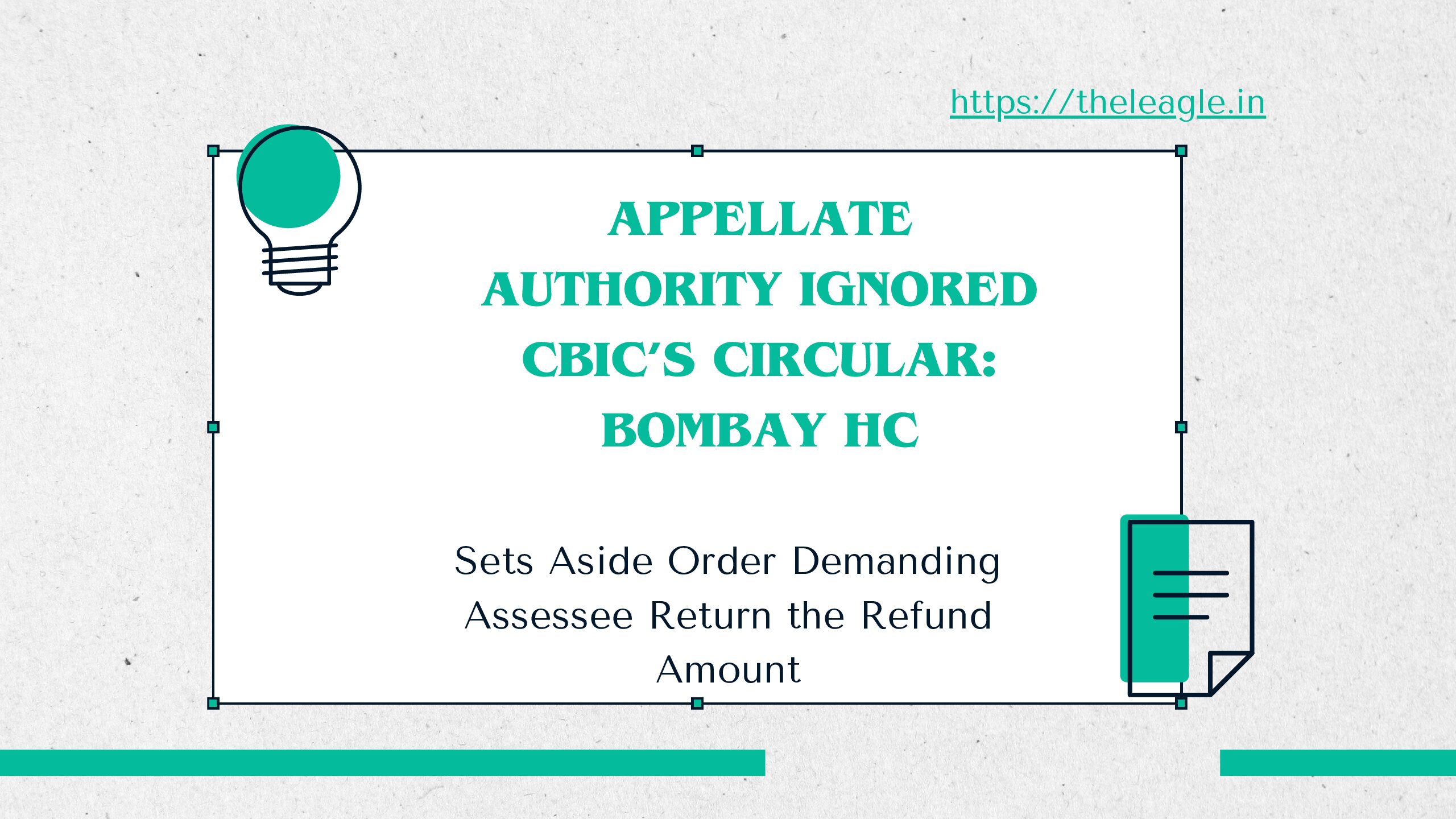In a recent decision[1] the Bombay High Court expressed surprise that the appellate authority ignored CBIC’s Circular while ordering the assessee to pay back the Input Tax Credit (‘ITC’) refund granted to it along with interest. The High Court set aside the order by appellate authority.
Facts
The assessee had filed an application on 29.08.2018 seeking refund of ITC under Section 54(3), CGST Act, 2017 on export of goods made under a Letter of Undertaking. The assessee was granted a 90% refund of ITC via the first order and via a subsequent order, after scrutiny, the entire amount claimed as refund was granted. The Department, however, challenged the order granting refund to the assessee before the Commissioner/appellate authority claiming that the assessee must pay back the entire refund amount along with the interest. The Commissioner passed an order in favor of the Department which was assailed by the asssessee before the Bombay High Court. The primary ground of the assessee’s challenge was the legality of the Commissioner’s order.
Two Circulars
The legality or sustainability of the Commissioner’s order rested on CBIC’s Circular issued on 18.11.2019 (‘Circular of 2019’). The Department argued that the assessee was not allowed to make a simultaneous claim for refund that related to different financial years. And that in the impugned case, the assessee had claimed credit for the period from 1.04.2018 to July 2019 and financial year 2017-18.
The assesee, on the other hand, argued that the refund was in conformity with Rule 89(4), CGST Rules, 2017 which provide a detailed formula for computing the refund for the assessee. Further, the assessee argued that the Commissioner’s view was not in accordance with the CBIC’s Circular dated 31.03.2020 (‘Circular of 2020’) which clarified and negated some of the refund related conditions mentioned in the Circular of 2019.
The Commissioner was correct in interpreting the Circular of 2019. Paragraph 8 of Circular of 2019 stated that while an applicant file a refund for a tax period or by clubbing different tax periods, the refund claim cannot spread across different financial years. The Commissioner was remiss in not noting that the Circular of 2020 had categorically modified the Circular of 2019 and removed the condition that a refund cannot be spread across more than one financial year. (para 2.5) Paragraph 2.4 of Circular of 2020 stated that:
On perusal of the provisions under sub-section (3) of section 16 of the Integrated Goods and Services Tax Act, 2017 and sub-section (3) of section 54 of the CGST Act, there appears no bar in claiming refund by clubbing different months across successive Financial Years. (emphasis added)
The rationale for modification was motivated by the underlying legal principle that a Circular cannot introduce a more stringent condition than imposed by the statutory provision. Circular of 2020 was also prompted by the Delhi High Court’s decision wherein it termed the condition imposed Paragraph 8 of the Circular of 2019 as arbitrary and stayed the condition which prevented an assessee from claiming refunds that spread across more than one financial year. The High Court had ordered opening of portal to allow the exporters to claim refunds that were tied to more than one financial year.
Decision
A persual of Rule 89(4) along with the Circular of 2020 clarifies the legal position amply, and the Bombay High Court correctly noted that the assessee was entitled to claim the ITC credit available for the prior financial years too. The High Court stated that it was a matter of wonder as to how the Commissioner could arrive at a decision contrary to both the Rule and the Circular of 2020 to deny the refund to the assessee. And that either the Commissioner had overlooked or not addressed the matter because it did not record a finding on the issue, which was impermissible. (para 11) Accordingly, the High Court concluded that the order of the Commissioner could not be sustained and was liable to be set aside.
Conclusion
The impugned decision is an instance of the Department challenging a legally sound order of one of its own officers, and the appellate authority, in this case the Commissioner, adopting a view that was contrary to the CBIC’s Circular. Either the Circular of 2019 was cherrypicked because it favored the Department or there was a genuine oversight by the Commissioner in not referring to the Circular of 2020, which had diluted the Circular of 2019. Either way, through the impugned case, the GST Department does not give the impression of a sound tax administration that is taking decisions as per the applicable law.
[1] M/s Sine Automation and Integration Pvt Ltd v Union of India TS-697-HCBOM-2023-GST.
